Japanese
Table Manners
Traditional Japanese kaiseki cuisine
Basics
Traditional Japanese kaiseki ryori (multi-course cuisine) can be divided into two styles:
kaiseki ryori served at banquets and kaiseki ryori served at tea ceremonies.
This article will focus on banquet kaiseki ryori, the most common traditional Japanese cuisine.
Banquet kaiseki ryori
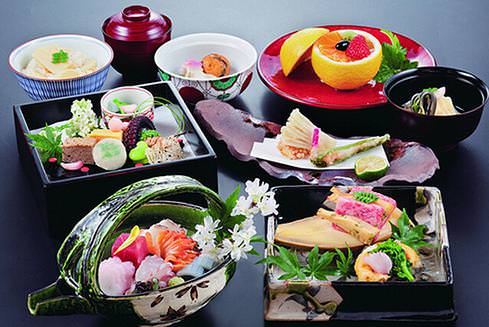
This feast-oriented cuisine, originally served at ryotei (first-class Japanese restaurants), ryokan (traditional Japanese inns) and wedding receptions, has gone mainstream in Japan. The dishes are essentially appetizers meant to accompany alcohol and are served in the following order: hors d'œuvres, boiled and seasoned dishes, sashimi, grilled meat or fish, and finally rice and soup.
Tea ceremony kaiseki ryori
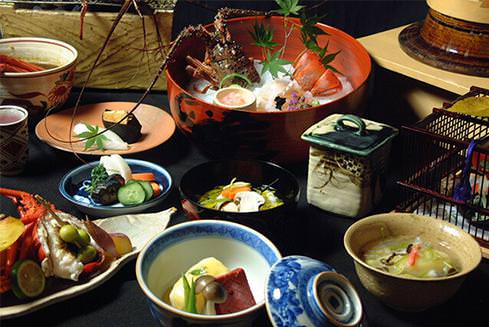
This cuisine served at tea ceremonies consists of rice, soup and three side dishes. In contrast to banquet kaiseki ryori, the rice and soup are served first. People often confuse the two types of kaiseki ryori because they have the same pronunciation (but different kanji characters). For this reason, the kaiseki ryori served at tea ceremonies is now often called cha-kaiseki (cha means tea).
Japanese-style room etiquette
Manners
Rigorous etiquette should be observed when dining in traditional Japanese-style rooms.
This includes basics such as opening sliding doors in steps rather than all at once and
kneeling on floor cushions only after offering others a place to sit.
Sliding door etiquette
Opening a sliding door
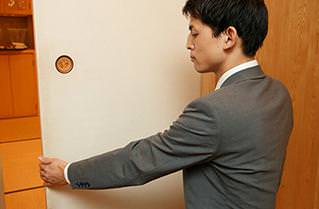
Kneel, sitting on your ankles, straight in front of the door. With your hand nearest the handle, use the handle to open the door 5 cm. Then insert your hand in that space and slide the door until the edge is centered in front of you.
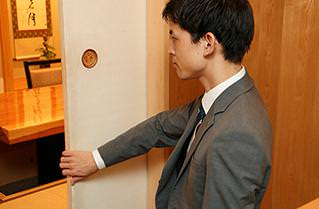
Use your other hand to open the door wide enough for your body to pass through. After joining your hands and making a slight bow, stand up fully and enter the room, starting with the leg nearest the most humble seat.
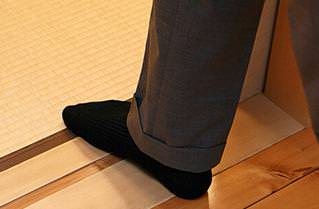
When entering the room, do not step on the door threshold or tatami mat edges. It is said that stepping on the threshold, where the gods reside, will bring the home or establishment bad luck.
Closing a sliding door

After entering the room, turn towards the door and kneel again. With your hand closest to the door, grasp the edge of the door and close it until the edge is centered in front of you.

Then use your other hand to slide the door until it is 5 cm from being closed. Finally, use the same hand on the handle to close the door completely.
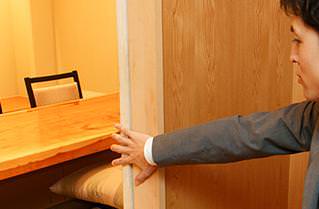
Opening or closing a sliding door all at once is considered bad manners. Closing it correctly shows consideration for others.
Floor cushion etiquette
Sitting on a floor cushion
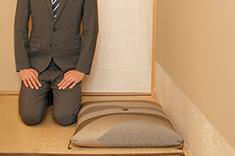
Kneel, sitting on your ankles, beside the furthest unused cushion from the entrance and bow slightly.
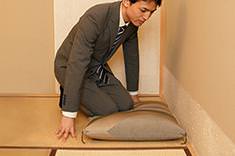
Place your hands on the floor and twist yourself towards the cushion. Then place your knees on the edge of the cushion.
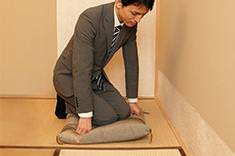
Supporting yourself with your hands, slide your knees onto the center of the cushion.
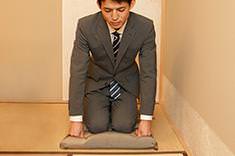
Turn your body until it faces the table. Then sit back on your ankles.
Leaving a floor cushion
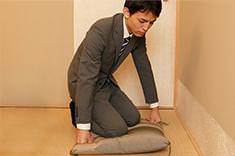
Place your hand (the one nearest the place of honor) behind you and shift your body.
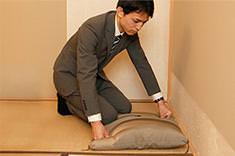
Slide your knees slowly off the cushion.
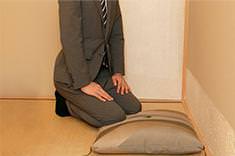
Sit upright on your ankles.

Place your hands on your legs and shift your body until it faces the table.
Hand towel etiquette
Manners
Hand towels should only be used to wipe your hands.
How do you wipe your mouth? Use a kaishi (Japanese tissue).
Using a hand towel
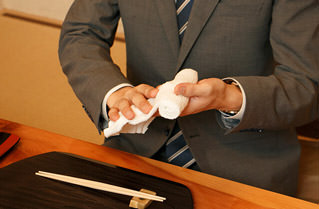
Pick up the towel with your right hand and transfer it to your left hand. Open it slowly and wipe your hands. When finished, fold it so the side you wiped your hands on is inside. Place it back where you found it.
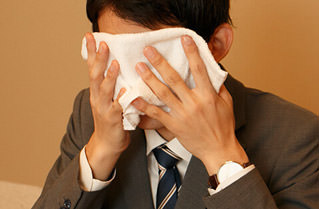
The hand towel is for wiping your hands. Using it to wipe your face, mouth, body or anything else is a breach of etiquette.
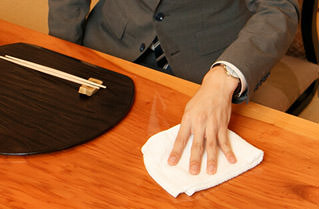
Some people use their hand towels to wipe the table, but this is not polite.
Using a kaishi
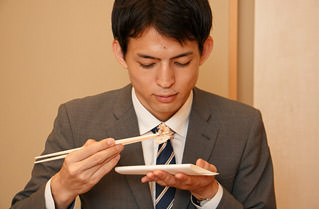
Use it like a saucer kaishi can be used in various ways, such as to catch juice dripping from food being raised to your mouth.
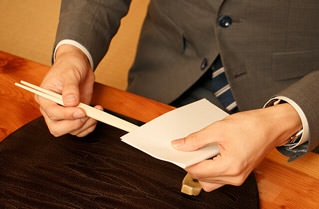
Wipe your mouth or chopsticks Use it to wipe your mouth or the ends of your chopsticks. You can also use your finger to wipe lipstick off your glass, then wipe your finger on the kaishi.
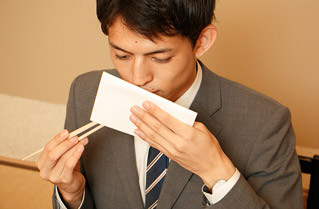
Hide your mouth when removing bones Use it to hide your mouth when removing fish bones or seeds. You can even use it to hide leftovers.
Chopstick etiquette
Manners
Japanese table manners include many chopstick rules.
To help Japanese people around you feel comfortable, please learn how to correctly use chopsticks.
Picking up chopsticks
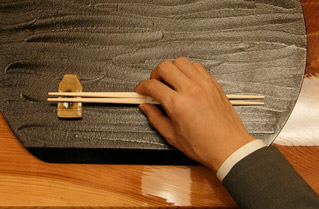
First grasp the middle of the chopsticks with your right hand.
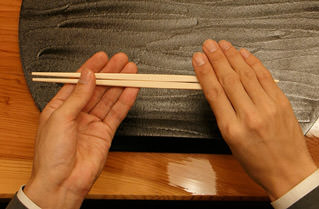
Then rest the chopsticks on your left hand and slide your right hand beneath.
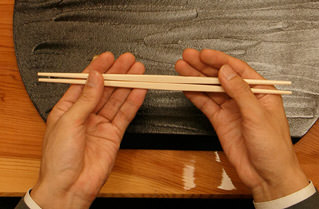
Hold the chopsticks with your right hand at a point about one third their length.
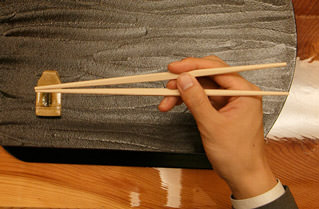
Remove your left hand, and hold the chopsticks correctly.
Picking up chopsticks while holding a bowl
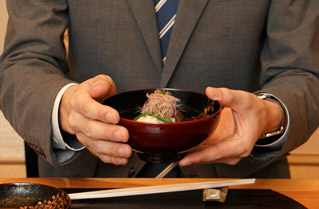
Raise the bowl with both hands and place it on your left hand.
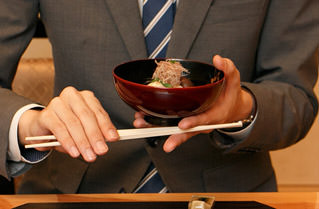
Pick up the chopsticks with your right hand and place them between two left hand fingers.
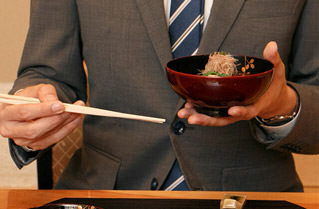
Turn your right hand beneath the chopsticks and hold them correctly. Release them from your left hand.
 Chopstick don'ts
Chopstick don'ts
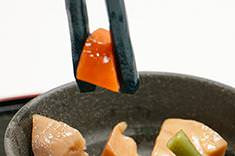
Do not pick up food with the large end of chopsticks.
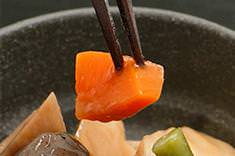
Do not spear food with chopsticks.
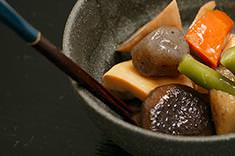
Do not use chopsticks to pull a dish toward you.
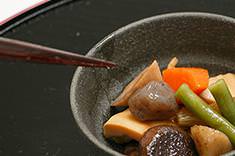
Do not hold chopsticks hesitantly over food.
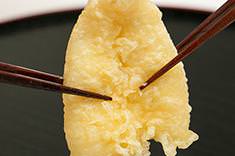
Do not pass food with chopsticks (which resembles the passing of ashes at a crematorium).

Do not move chopsticks within a dish as if searching for something better.
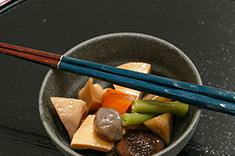
Do not place chopsticks on a bowl or dish. Use a chopstick rest.
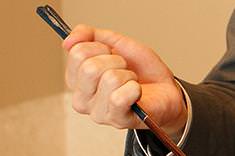
Do not hold chopsticks as you would hold a dagger.
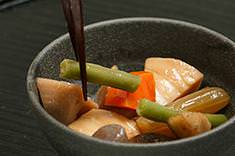
Do not eat from dish to dish without eating rice or soup between.
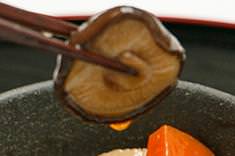
Do not raise dripping food to your mouth.

Do not lick the tips of empty chopsticks.
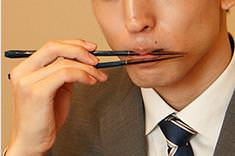
Do not nibble on rice or small pieces of food stuck on chopsticks.
Banquet kaiseki etiquette
Manners
Banquet kaiseki ryori dishes should be eaten in the order they arrive.
If a new dish arrives before you finish the previous dish, however, feel free to eat
some of the new dish before returning to the previous dish.
Eating banquet kaiseki

1. Sakizuke Do not lift the tray carrying Sakizuke hors d’œuvres. Bowls may be raised to your lips. Remove food on skewers with your chopsticks while holding the skewer and place the empty skewer on the far side of the plate.
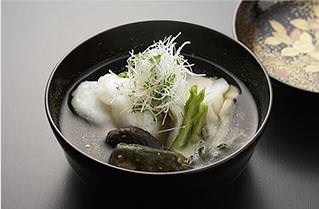
2. Suimono The type of container and soup (or steam-boiled dish) varies with the season. Remove the lid only after your superior has removed his or hers. Put the lid back on the bowl when you are finished eating.
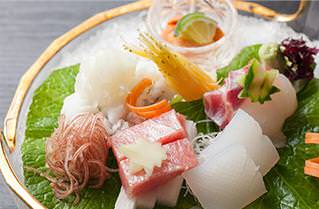
3. Mukozuke This sashimi dish includes white fish meat in front, shellfish in the middle, and fatty fish in the back. To maintain dish aesthetics, first eat food on the left, then on the right, then in the middle, and finally in the back.
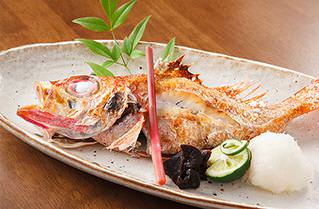
4. Yakimono The main dish in a kaiseki course is sliced fish, whole fish meat or grilled shrimp and scallops. You can touch shells and bones with your fingers when eating shellfish, whole fish and unshelled crustaceans.
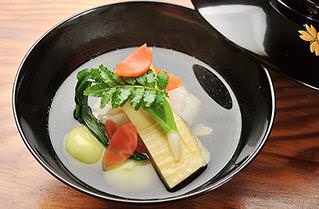
5. Nimono The boiled and seasoned dish is generally served in a rice bowl with a lid. Small bowls can be held in one hand, but big bowls should be left on the table and eaten from while using a kaishi or the lid as a saucer.
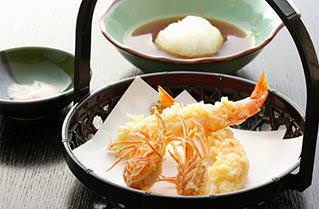
6. Agemono Add the condiments to the sauce and eat the tempura nearest you for aesthetic purposes. Raise each bite to your mouth while holding the sauce container in your hand.
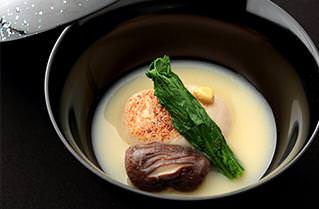
7. Mushimono and Sunomono This is often an egg custard containing steamed food. Open the lid and let the steam escape. Then scoop the custard from the side nearest you. Vinegared food is juicy, so eat it while holding the container.
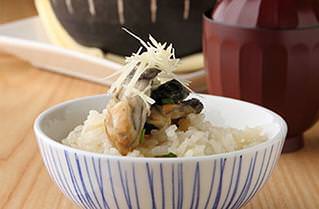
8. Gohan, tome-wan and konomono Tome-wan (the last soup served) and konomono (pickled vegetables) top off the meal before dessert and indicate it is time to stop drinking sake. Eat rice and soup while they are warm.

9. Mizugashi and Kanmi Dessert completes the meal. Start with the carved fruit on your right. If matcha and a Japanese confectionery are included, eat the confectionery before drinking the matcha.
Removing bowl lids
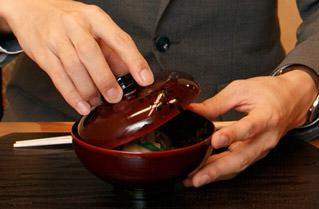
Hold the bowl with your left hand while slowly raising the lid with your right hand.
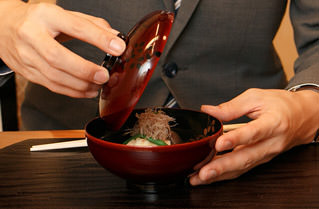
Let droplets on the lid drip into the dish before raising the lid completely.
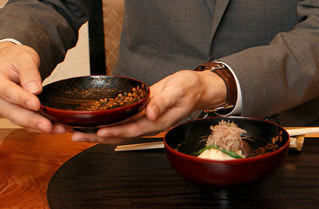
Use both hands to turn the lid over and place it on the right side of a bowl on your right or on the left side of a bowl on your left.
Eating grilled fish
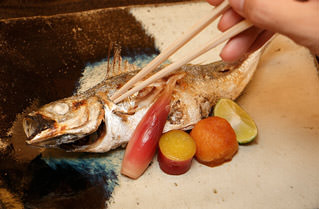
Start eating from the head (the left side) and work your way down the body toward the tail.
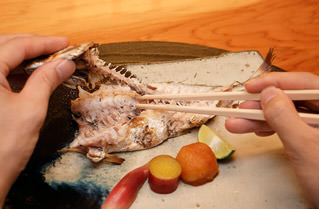
After finishing the half above the bone, hold the fish head up with your left hand, place your chopsticks between the bones and flesh, and remove the bones.
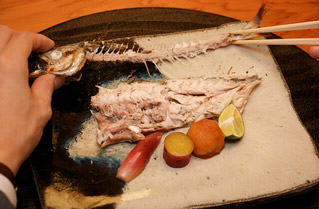
Place the bones on the back side of the plate and eat the rest of the fish from left to right.
Japanese table manners are challenging
Japanese table manners observed while dining on traditional Japanese cuisine
(which has acquired UNESCO Intangible Cultural Heritage status) require time and effort to master.
Even Japanese find them challenging. Let's make the effort to acquire beautiful manners!

Splitting disposable chopsticks
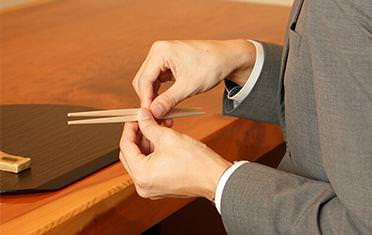
When separating connected chopsticks, hold them horizontally and separate them vertically while being careful not to elbow your neighbour.

Using your hand as a plate
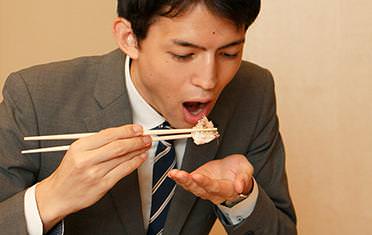
This practice, started by an actress in the Showa era, may look refined at first glance, but is a breach of etiquette.



